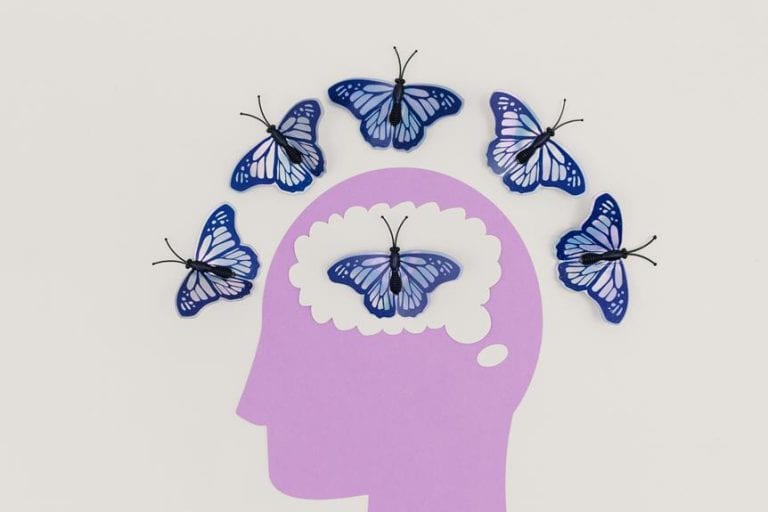Does Shayne Have Autism
As I observed Shayne's interactions and behaviors on Love Is Blind, one particular aspect caught my attention. The way he struggled with social cues and communication patterns raised questions in my mind.
Could Shayne's difficulties potentially be linked to a condition like autism? Exploring this possibility could provide valuable insights into understanding his perspective and reactions throughout the show.
Key Takeaways
- Recognizing signs of social skill challenges and sensory sensitivities in Shayne.
- Understanding the importance of early detection and diagnosis for Shayne's well-being.
- Highlighting the diagnostic process involving evaluations and professional input for Shayne.
- Emphasizing the need for tailored support, advocacy, and inclusive environments for Shayne.
Understanding Autism Spectrum Disorder

In exploring Autism Spectrum Disorder, one must grasp the complexities of its neurodevelopmental nature and the varied challenges it presents. Individuals with autism often experience difficulties in social skills, such as interacting with others, interpreting social cues, and understanding different perspectives.
For me, spending time with peers can be overwhelming due to these challenges, making social situations stressful and exhausting. Additionally, sensory sensitivities play a significant role in how individuals with autism perceive and interact with the world. Personally, certain sounds, lights, or textures can be overwhelming or distracting, affecting my ability to focus or engage in activities.
These sensory sensitivities can impact daily life, making it essential to create environments that are accommodating and supportive. Understanding these aspects of autism is important for developing strategies and interventions that can help individuals navigate social interactions and sensory experiences effectively.
Signs and Symptoms of Autism
Exploring the signs and symptoms of autism reveals key indicators of the neurodevelopmental disorder's characteristics. One thing to note is that individuals with autism often exhibit challenges in social skills, such as difficulty understanding and responding to social cues. Repetitive behaviors, like movements or speech patterns, are also common signs. In addition, intense focus on specific interests is a notable symptom seen in many individuals with autism.
Love Is Blind when it comes to changes in routine for people with autism. They may struggle with alterations in their schedule and have sensory sensitivities. Additionally, expressing emotions and understanding others' perspectives can be challenging for those with autism. These difficulties in communication and social interaction are significant aspects to take into account when evaluating for autism.
Early Detection and Diagnosis

Early detection of autism is vital for initiating appropriate interventions and support.
Healthcare professionals conduct thorough evaluations to diagnose autism spectrum disorder.
Recognizing early signs and seeking timely diagnosis can greatly impact outcomes for individuals with autism.
Signs of Autism
Noticing certain behaviors in children as young as 18 months old can signal potential signs of autism. When observing for signs of autism, it's important to take into account various aspects such as parental concerns and adherence to developmental milestones.
The following list outlines key signs that may indicate a child could be on the autism spectrum:
- Difficulty with social cues and interactions, like making eye contact or engaging in pretend play.
- Challenges with communication, which may include delayed speech development or difficulty understanding non-verbal cues.
- Sensory sensitivities, such as being overly sensitive to light, sound, or textures.
- Engaging in repetitive behaviors like hand-flapping, rocking, or strict adherence to routines.
Early recognition of these signs can pave the way for timely intervention and support.
Diagnostic Process Overview
When considering the diagnostic process for autism, it's imperative to recognize the importance of early detection and evaluation in evaluating potential signs and symptoms.
Diagnostic criteria for autism spectrum disorder (ASD) typically involve evaluating communication skills, social interactions, interests, and behaviors. Evaluation tools like the Autism Diagnostic Observation Schedule (ADOS) and the Autism Diagnostic Interview-Revised (ADI-R) are commonly used to aid in diagnosis.
A team approach is often taken, with professionals such as psychologists, developmental pediatricians, speech therapists, and occupational therapists working together to gather information and make an accurate assessment.
Early detection is critical as it allows for timely intervention, leading to improved outcomes and a better quality of life for individuals with ASD.
Importance of Early Detection
Timely identification of potential developmental concerns is important in facilitating appropriate interventions and support for individuals. Early detection of autism can have a profound impact on a child's development through tailored interventions.
To evoke emotion in the audience, consider the following:
- Parental involvement: Parents and caregivers play a critical role in observing and reporting early signs of autism.
- Early intervention: Early diagnosis allows for timely interventions, leading to improved outcomes.
- Developmental milestones: Monitoring a child's developmental milestones is essential in detecting potential concerns.
- Educating caregivers, community awareness: Educating caregivers and raising community awareness can enhance early detection efforts.
Intervention and Support Strategies

Intervention and support strategies for individuals with autism encompass a range of therapies and accommodations aimed at enhancing their development and daily functioning. These strategies commonly include:
- Behavioral therapies
- Speech and language therapy
- Occupational therapy
- Social skills training
Early intervention is particularly important for children with autism to improve their developmental outcomes and quality of life.
Support strategies often involve:
- Creating structured routines
- Providing clear communication
- Offering sensory accommodations to help individuals with autism navigate their environment effectively
Tailoring educational goals and implementing individualized plans, such as Individualized Education Plans (IEPs), play a significant role in meeting the unique needs of students with autism.
Collaborating with a multidisciplinary team of professionals, including psychologists, educators, and therapists, is essential for developing effective intervention and support plans that address the diverse needs of individuals with autism thoroughly. This collaborative approach guarantees that interventions are holistic, personalized, and geared towards maximizing the potential for growth and development in individuals with autism.
Autism-Friendly Environment

Creating an inclusive and supportive environment that caters to the specific needs of individuals on the autism spectrum is essential for promoting their overall well-being and fostering a sense of belonging. When designing an autism-friendly environment, it's important to take into account sensory accommodations, social skills, and communication strategies.
- Sensory accommodations: Providing a sensory-friendly space with minimal sensory distractions can help individuals on the autism spectrum feel more comfortable and at ease in their environment.
- Social skills: Implementing social skills training programs or peer support groups can assist individuals with autism in developing and enhancing their social interaction abilities.
- Communication strategies: Utilizing visual aids, clear instructions, and alternative communication methods such as sign language or picture communication systems can facilitate effective communication for individuals with autism.
- Structured routines: Establishing predictable routines and clear schedules can help individuals on the autism spectrum navigate their daily activities with less anxiety and uncertainty.
Advocating for Individuals With Autism

Advocating for individuals with autism involves championing for acceptance, understanding, and support tailored to their unique needs. It's essential to raise neurodiversity awareness and provide the necessary support for individuals on the autism spectrum. This advocacy focuses on promoting acceptance and inclusion within society.
Understanding that each person with autism has individualized accommodations and requirements is important in advocating for their rights and well-being. By highlighting the importance of creating inclusive environments and fostering understanding, we can work towards a more supportive and accommodating society for individuals with autism.
It's essential to respect the privacy and individual differences of those with autism while advocating for their needs. Through these efforts, we can help individuals with autism thrive and contribute meaningfully to their communities. Advocating for individuals with autism is a continuous journey towards building a more inclusive and supportive world for all.
Frequently Asked Questions
What Condition Does Shane From Love Is Blind Have?
Shayne from Love Is Blind has ADHD, which influences his behavior. His diagnosis explains his erratic actions and intense reactions on the show. Understanding his symptoms can guide appropriate support options for him.
Conclusion
To sum up, while Shayne's behavior on Love Is Blind has sparked speculation and debate, it's important to approach discussions about autism with sensitivity and understanding.
By highlighting the signs and symptoms of autism and promoting early detection and intervention, we can create a more inclusive and supportive environment for individuals on the spectrum.
Advocating for awareness and acceptance is critical in fostering a more empathetic society for everyone.







